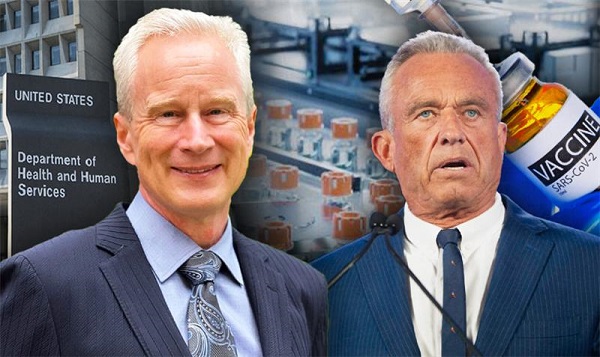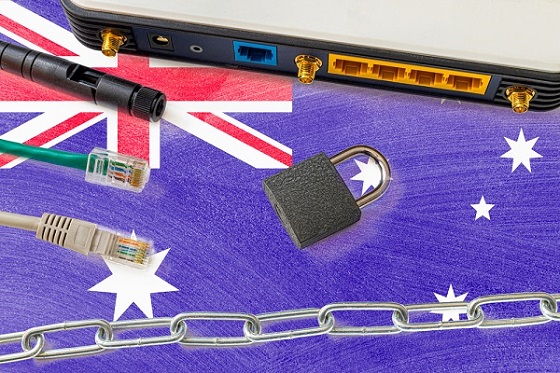Alberta
ECONOMIC RECONCILIATION IS A PRIORITY AT ENBRIDGE

ECONOMIC RECONCILIATION IS A PRIORITY AT ENBRIDGE

Building and maintaining relationships with Indigenous nations and groups over the lifecycle of our assets is essential to Enbridge’s continued success as a leading North American energy delivery company. An important part of how we do business is to work with Indigenous communities to help increase their capacity to participate economically in our projects and operations. Economic engagement ranges from providing training and employment opportunities that build transferrable skills, to the procurement of goods and services from Indigenous businesses. To tap into Indigenous communities’ growing capacity and desire to participate in contracting and employment opportunities, Enbridge has adopted a supply chain process that requires prospective contractors to include detailed Socio-Economic Plans that outline how they will include local Indigenous communities and businesses in their work for Enbridge’s projects and operations. This approach exemplifies our desire to build long-term relationships which create value for both Indigenous communities and our business.
Enbridge has long recognized that hiring Indigenous businesses supports local employment, gives us the opportunity to understand available services and talent, and helps build trust and relationships. We also appreciate the important contribution that Indigenous businesses make each year to the overall economy.
In 2019, we marked a major milestone, surpassing $1 billion in Indigenous spending since 2011 across our Liquids Pipelines and Gas Transmission businesses. This includes direct spend with Indigenous businesses as well as subcontracting opportunities for Indigenous businesses, suppliers and wages paid to Indigenous workers from our contractors.
Our Line 3 pipeline replacement project (L3RP) is an excellent example of how our supply chain is delivering on our commitment to maximize Indigenous participation. This supports our efforts to advance economic reconciliation in accordance with the Truth and Reconciliation Commission’s Call to Action #92.
At $5.3 billion for the Canadian segment alone, the L3RP was the largest capital project in Enbridge’s history. It also represented our largest and most successful community engagement effort – including more than 150 Indigenous communities from as far as 300 kilometres from the pipeline right of way.
As of late September 2019, Indigenous spending on the L3RP totaled approximately $440 million for contracting and wages, while more than 1,100 Indigenous men and women were employed on project construction, representing approximately 20% of the overall workforce.

Indigenous monitors provided environmental and cultural perspective to the project construction team.
“The economic benefits flowing to Indigenous communities from Line 3 pipeline construction are no accident or happy coincidence,” says Enbridge’s Dave Lawson, Vice President of Major Projects. “Rather, they are the direct result of our comprehensive and proactive engagement program and the joint commitments between Enbridge and numerous Indigenous communities and groups.”
The leaders of several First Nations located along the Line 3 route note that “this economic stimulus benefited more than just the workers, it benefited the families and the Nations we represent.” They worked with Enbridge and “found ways to ensure environmental protections, and ways to secure tangible economic benefits and career development commitments for the indigenous people we represent. Enbridge listened and we believe this project has been a success for our people.”
Another community benefitting from the L3RP was the Manitoba Metis Federation (MMF). David Chartrand, President of the MMF says, “In order to work on a pipeline you have to have certification, so we got our people all ready and trained a year before the pipeline went in. We were ahead of the game.”
“I can honestly say,” he adds, “that this is one of the true success stories that we can probably talk about. Enbridge has got a blueprint for other companies if they want to use it.”
This focus on engagement and inclusion led to 58 cooperative project agreements with Enbridge, representing the participation of 95 Indigenous communities or groups.
“From the outset, we made a concerted effort to ensure Indigenous communities understood our project, specifically how they might participate and benefit economically,” explains Kim Brenneis, Director of Community and Indigenous Engagement. “I think the positive results we’ve seen speak to Enbridge’s strong commitment to inclusion as well as to building mutually-beneficial relationships with Indigenous nations.”
Beyond successful engagement, there are three major reasons for the strong Indigenous project participation and spending profile, explains Barry Horon, Director of Supply Chain Management for Projects.
“First, we worked with Indigenous communities to help create the capacity needed to participate in meaningful pipeline contracting and employment opportunities; second, Enbridge adopted a proactive supply chain process that, among other initiatives, required prospective contractors to include detailed Indigenous participation plans in their bids; and third, we implemented a labour strategy to enhance connections between Indigenous job seekers and our primary construction contractors through an online portal and the use of Indigenous labour brokers,” says Horon.

Indigenous men and women, such as Kara Pooyak of Sweetgrass First Nation, made up 20% of the Line 3 construction workforce.
Included in the Indigenous workforce were 27 construction monitor and nine liaison positions that provided both Indigenous perspectives and advice to the Line 3 project team. This helped to ensure that Enbridge’s environmental mitigation strategies – which were approved by the National Energy Board – were implemented during construction.
Another key component of the labour strategy was the now-completed Line 3 Pipeline 101 training-to-employment program. Over three years, more than 260 Indigenous men and women graduated from the program, many of whom have secured work on the L3RP.

Justin McKinney of Swan Lake First Nation is building a career in pipelining, thanks to training and mentorship he received during the Line 3 project.
Our experience with the L3RP led to an assessment of how Enbridge’s Indigenous engagement practices had evolved over the past few years. An outcome of this process was the introduction, in 2019, of our Indigenous Lifecycle Engagement Framework, which now guides our approach to building and sustaining long-term relationships across our business going forward, including for enhancing Indigenous economic participation in our projects and operation.
The framework was shared with several Indigenous nations in Canada. We are now incorporating their feedback into our planning and we will continue to seek to seek their input to ensure that our approach remains in step with their interests and goals.
Thanks to Todayville for helping us bring our members’ stories of collaboration and innovation to the public.
Click to read a foreward from JP Gladu, Chief Development and Relations Officer, Steel River Group; Former President and CEO, Canadian Council for Aboriginal Business.

JP Gladu, Chief Development and Relations Officer, Steel River Group; Former President & CEO, Canadian Council for Aboriginal Business
Click to read comments about this series from Jacob Irving, President of the Energy Council of Canada.

Jacob Irving, President of Energy Council of Canada
The Canadian Energy Compendium is an annual initiative by the Energy Council of Canada to provide an opportunity for cross-sectoral collaboration and discussion on current topics in Canada’s energy sector. The 2020 Canadian Energy Compendium: Innovations in Energy Efficiency is due to be released November 2020.
Click below to read more stories from Energy Council of Canada’s Compendium series.
PETER SUTHERLAND SR GENERATING STATION POWERS NORTHEAST ONTARIO
Alberta
Early Success: 33 Nurse Practitioners already working independently across Alberta

Nurse practitioners expand primary care access |
The Alberta government’s Nurse Practitioner Primary Care program is showing early signs of success, with 33 nurse practitioners already practising independently in communities across the province.
Alberta’s government is committed to strengthening Alberta’s primary health care system, recognizing that innovative approaches are essential to improving access. To further this commitment, the Nurse Practitioner Primary Care Program was launched in April, allowing nurse practitioners to practise comprehensive patient care autonomously, either by operating their own practices or working independently within existing primary care settings.
Since being announced, the program has garnered a promising response. A total of 67 applications have been submitted, with 56 approved. Of those, 33 nurse practitioners are now practising autonomously in communities throughout Alberta, including in rural locations such as Beaverlodge, Coaldale, Cold Lake, Consort, Morley, Picture Butte, Three Hills, Two Hills, Vegreville and Vermilion.
“I am thrilled about the interest in this program, as nurse practitioners are a key part of the solution to provide Albertans with greater access to the primary health care services they need.”
To participate in the program, nurse practitioners are required to commit to providing a set number of hours of medically necessary primary care services, maintain a panel size of at least 900 patients, offer after-hours access on weekends, evenings or holidays, and accept walk-in appointments until a panel size reaches 900 patients.
With 33 nurse practitioners practising independently, about 30,000 more Albertans will have access to the primary health care they need. Once the remaining 23 approved applicants begin practising, primary health care access will expand to almost 21,000 more Albertans.
“Enabling nurse practitioners to practise independently is great news for rural Alberta. This is one more way our government is ensuring communities will have access to the care they need, closer to home.”
“Nurse practitioners are highly skilled health care professionals and an invaluable part of our health care system. The Nurse Practitioner Primary Care Program is the right step to ensuring all Albertans can receive care where and when they need it.”
“The NPAA wishes to thank the Alberta government for recognizing the vital role NPs play in the health care system. Nurse practitioners have long advocated to operate their own practices and are ready to meet the growing health care needs of Albertans. This initiative will ensure that more people receive the timely and comprehensive care they deserve.”
The Nurse Practitioner Primary Care program not only expands access to primary care services across the province but also enables nurse practitioners to practise to their full scope, providing another vital access point for Albertans to receive timely, high-quality care when and where they need it most.
Quick facts
- Through the Nurse Practitioner Primary Care Program, nurse practitioners receive about 80 per cent of the compensation that fee-for-service family physicians earn for providing comprehensive primary care.
- Compensation for nurse practitioners is determined based on panel size (the number of patients under their care) and the number of patient care hours provided.
- Nurse practitioners have completed graduate studies and are regulated by the College of Registered Nurses of Alberta.
- For the second consecutive year, a record number of registrants renewed their permits with the College of Registered Nurses of Alberta (CRNA) to continue practising nursing in Alberta.
- There were more than 44,798 registrants and a 15 per cent increase in nurse practitioners.
- Data from the Nurse Practitioner Primary Care Program show:
- Nine applicants plan to work on First Nations reserves or Metis Settlements.
- Parts of the province where nurse practitioners are practising: Calgary (12), Edmonton (five), central (six), north (three) and south (seven).
- Participating nurse practitioners who practise in eligible communities for the Rural, Remote and Northern Program will be provided funding as an incentive to practise in rural or remote areas.
- Participating nurse practitioners are also eligible for the Panel Management Support Program, which helps offset costs for physicians and nurse practitioners to provide comprehensive care as their patient panels grow.
Related information
Alberta
Province considering new Red Deer River reservoir east of Red Deer

Central Alberta reservoir study underway
Alberta’s government is moving forward a study to assess the feasibility of building a new reservoir on the Red Deer River to help support growing communities.
Demand for water from communities and businesses is increasing as more families, businesses and industries choose to live and work in central Alberta. The Red Deer River supplies water to hundreds of thousands of Albertans across the region and expanding water storage capacity could help reduce the risk of future droughts and meet the growing water demands.
Alberta’s government has now begun assessing the feasibility of building a potential new reservoir east of Red Deer near Ardley. A two-phase, multi-year study will explore the costs and value of constructing and operating the reservoir, and its impact on downstream communities, farmers and ranchers, and businesses.
“Central Alberta is a growing and thriving, and we are ensuring that it has the water it needs. This study will help us determine if an Ardley reservoir is effective and how it can be built and operated successfully to help us manage and maximize water storage for years to come.”
Reservoirs play a vital role in irrigation, drought management, water security and flood protection. Budget 2024 allocated $4.5 million to explore creating a new reservoir on the Red Deer River, at a damsite about 40 kilometres east of the City of Red Deer.
Work will begin on the scoping phase of the study as soon as possible. This will include reviewing available geotechnical and hydrotechnical information and exploring conceptual dam options. The scoping phase also includes meetings with municipalities and water users in the area to hear their views. This work is expected to be completed by December 2025.
“Reliable water infrastructure is essential for Alberta’s growing communities and industries. The Ardley reservoir feasibility study is a vital step toward ensuring long-term water security for central Alberta. As we assess this project’s potential, we’re supporting the sustainability of our economic corridors, agricultural operations and rural economy.”
“Water is essential to the agriculture industry and if the past few years are any indication, we need to prepare for dry conditions. A potential dam near Ardley could enhance water security and help farmers and ranchers continue to thrive in Alberta’s unpredictable conditions.”
Once that is complete, the feasibility study will then shift into a second phase, looking more closely at whether an effective new dam near Ardley can be safely designed and constructed, and the impact it may have on communities and the environment. Geotechnical and hydrotechnical investigations, cost-benefit analyses and an assessment of environmental and regulatory requirements will occur. The feasibility phase will also include gathering feedback directly from Albertans through public engagement. This work is expected to be completed by March 31, 2026.
Quick facts
- The Ardley dam scoping and feasibility study will be undertaken by Hatch Ltd., a Canadian multi-disciplinary professional services firm.
- Once the feasibility study is complete, government will assess the results and determine whether to pursue this project and proceed with detailed engineering and design work and regulatory approvals.
- Alberta’s government owns and operates several large reservoirs in the South Saskatchewan River Basin that help ensure sufficient water supply to meet demand from communities, irrigators and businesses, while also maintaining a healthy aquatic environment.
- Water stored at Gleniffer Lake, the reservoir created by Dickson Dam, helps supplement low winter flows along the Red Deer River and helps ensure an adequate water supply for Red Deer and Drumheller.
Related information
-

 Business1 day ago
Business1 day agoCarbon tax bureaucracy costs taxpayers $800 million
-

 Brownstone Institute1 day ago
Brownstone Institute1 day agoThe Most Devastating Report So Far
-

 ESG21 hours ago
ESG21 hours agoCan’t afford Rent? Groceries for your kids? Trudeau says suck it up and pay the tax!
-

 Daily Caller21 hours ago
Daily Caller21 hours agoLos Angeles Passes ‘Sanctuary City’ Ordinance In Wake Of Trump’s Deportation Plan
-

 COVID-192 days ago
COVID-192 days agoDr. McCullough praises RFK Jr., urges him to pull COVID shots from the market
-

 John Stossel19 hours ago
John Stossel19 hours agoGreen Energy Needs Minerals, Yet America Blocks New Mines
-

 Business2 days ago
Business2 days agoOttawa’s avalanche of spending hasn’t helped First Nations
-

 MAiD1 day ago
MAiD1 day agoOver 40% of people euthanized in Ontario lived in poorest parts of the province: government data




